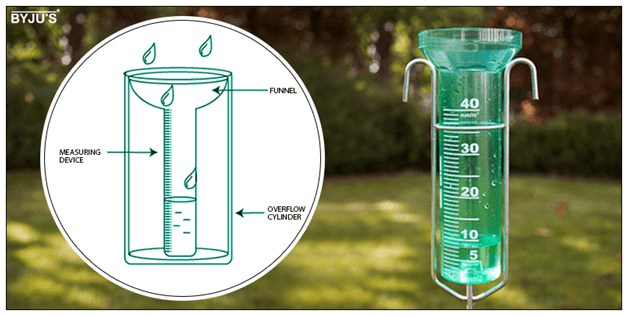Leading Attributes to Look for in a High-Quality Rain Gauge for Your Garden
Leading Attributes to Look for in a High-Quality Rain Gauge for Your Garden
Blog Article
Unveiling the Science Behind Rain Assesses: Just How These Instruments Play a Crucial Role in Environment Research and Ecological Surveillance
Rainfall evaluates, relatively simple tools, hold a profound importance in the world of environment research and environmental monitoring. As we peel back the layers of this clinical veil surrounding rainfall determines, we reveal a globe where accuracy, data precision, and precise observation merge to introduce a deeper understanding of our transforming climate and its impact on the earth.
Importance of Rainfall Gauges
Rainfall gauges play an important duty in surveillance and measuring rainfall levels, offering necessary information for climate study and analysis. These tools are fundamental in measuring the quantity of rainfall that happens in a particular area over a certain period. By determining and accumulating rainwater, rainfall determines deal valuable understandings right into the circulation and strength of rainfall, assisting meteorologists, hydrologists, and climatologists in recognizing weather condition patterns and trends.
Among the essential reasons why rainfall evaluates are vital is their capability to offer local and accurate data. Unlike satellite or radar-based dimensions, which offer more comprehensive observations, rainfall evaluates deal exact information details to the location where they are placed. This local data is important for various applications, consisting of flood forecasting, dry spell surveillance, and water source administration. Additionally, long-term information collected from rainfall assesses assists in evaluating climate adjustment effects and patterns, adding dramatically to clinical research study and decision-making procedures. In significance, rainfall assesses function as important devices in the area of weather forecasting and ecological science, playing an important role ahead of time our understanding of climate and climate characteristics.
Sorts Of Rain Gauges

Functionality and Operation
In the realm of environment research and meteorological researches, the effectiveness of rainfall determines lies in their complex capability and accurate operational mechanisms. Rain evaluates are made to precisely gauge the amount of rainfall that drops over a details area during a collection duration.
The functionality of rainfall determines is based on the concept of gauging and gathering rain in a standardized fashion. This gathered information is critical for comprehending regional weather condition patterns, tracking lasting environment trends, and analyzing environmental influences. To guarantee accurate measurements, rainfall gauges demand to be strategically positioned in open locations far from obstructions investigate this site such as buildings or trees that can hinder the collection procedure.
The operational aspect of rain assesses includes regular upkeep to stop debris buildup, calibration checks to preserve measurement precision, and information recording for analysis (rain gauge). On the whole, the performance and operation of rain assesses are important for collecting trustworthy precipitation information vital to environment study and ecological surveillance
Role in Environment Research Study
Provided the vital importance of exact rainfall dimensions in recognizing weather condition patterns and ecological influences, the role of rain gauges in environment research study is essential. Rain evaluates offer important data for environment research by evaluating the quantity of rainfall that tips over a certain area during a given period. This information is essential for keeping track of long-term fads in precipitation patterns, assessing the influence of environment modification on rainfall circulation, and enhancing climate designs.

Environment scientists use data collected from rain assesses to assess variations in rainfall levels, recognize local climate patterns, and review the effectiveness of water source monitoring methods. By contrasting historical precipitation information with current measurements, researchers can detect shifts in rainfall patterns, such as changes in the frequency or strength of rainfall occasions. This info is essential for understanding exactly how environment adjustment is affecting precipitation characteristics and can aid policymakers make informed decisions pertaining to adaptation and reduction approaches.
Applications in Environmental Monitoring

In flood forecasting, rain gauge information assists to track rainfall strength and distribution, enabling authorities to provide timely warnings and take required measures to alleviate flood dangers (rain gauge). Dry spell tracking relies upon rainfall gauge information to analyze moisture levels in the soil and track rainfall deficits, aiding in the recognition of drought-prone locations and the implementation of dry spell useful site feedback approaches
Moreover, rainfall scale information plays an essential function in water resource management by providing information on water accessibility and usage fads. This information is used to make educated choices concerning water allowance, conservation measures, and sustainable water resource preparation. Furthermore, in agriculture, rainfall scale data helps farmers in maximizing watering routines, plant option, and general ranch management methods based upon neighborhood rainfall patterns. In general, rain determines are essential tools in environmental surveillance, offering beneficial understandings that add to informed decision-making and lasting source management.
Conclusion
In final thought, rain evaluates are necessary devices for determining rainfall, providing valuable information for environment research and ecological tracking. With various kinds and functionalities, rainfall gauges play an important duty in comprehending rainfall patterns and their influence on the atmosphere. By accurately gauging rainfall, these devices contribute to the advancement of scientific knowledge and aid in making notified decisions pertaining to image source water source management and calamity preparedness.
Rain assesses play an indispensable role in tracking and measuring precipitation degrees, giving necessary information for environment research study and analysis. The basic rainfall scale, known as the "tipping bucket" gauge, is one of the most generally utilized tools. Ultrasonic rainfall gauges usage sound waves to identify the visibility of rainfall, providing real-time information on precipitation degrees.Climate researchers utilize data collected from rain determines to assess variations in precipitation degrees, identify regional climate patterns, and evaluate the performance of water source administration approaches.In conclusion, rain evaluates are important devices for gauging precipitation, providing valuable information for climate research study and ecological surveillance.
Report this page